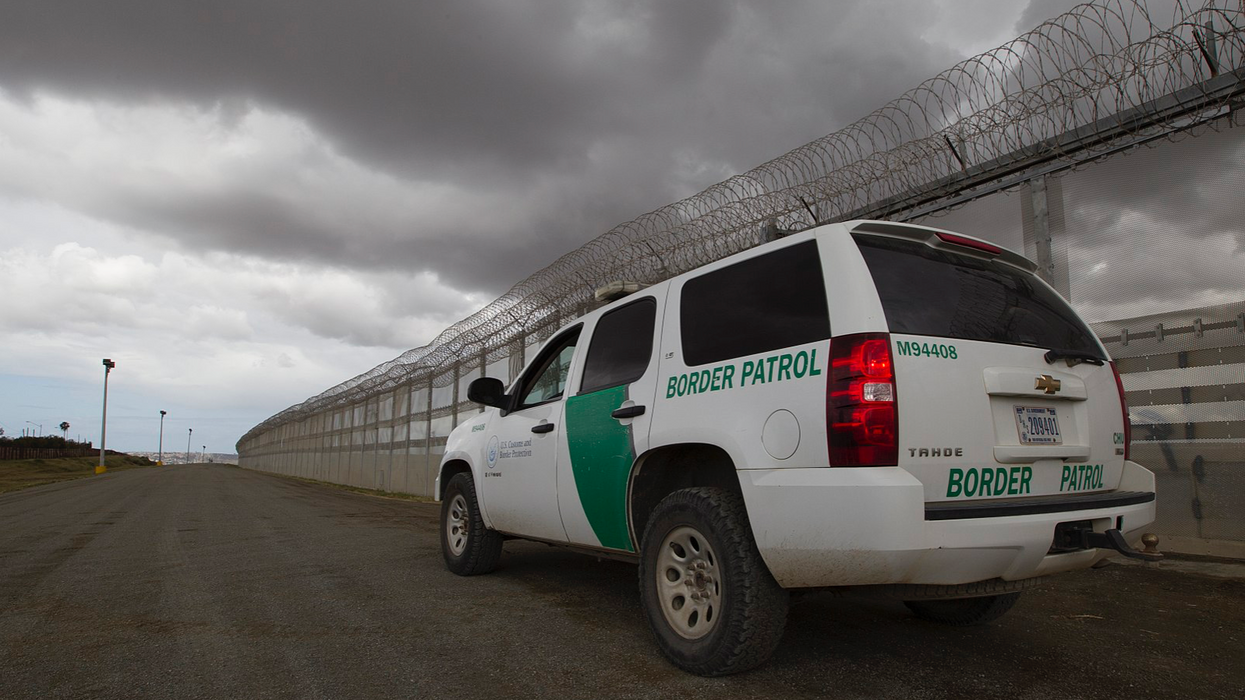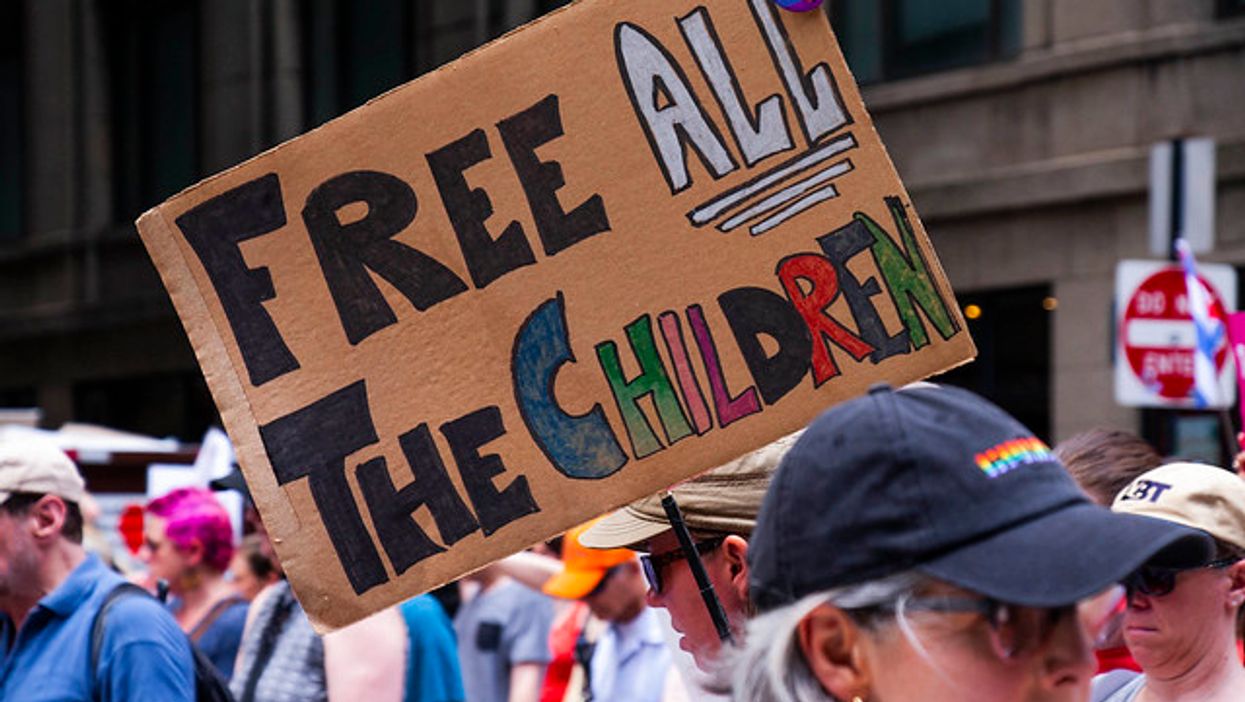Afghans Who Won Visa Lottery Left Behind By Trump Policy
Reprinted with permission from ProPublica
Fakhruddin Akbari is allowing his full name to be published because he is certain he is going to die. Akbari, his wife and his 3-year-old daughter fled their home in Kabul, Afghanistan, two weeks ago. They've been hiding with friends in the city, living on bread and water.
He should be among the lucky ones.
Instead, Akbari fears the very thing he was hoping would be his salvation will now make him a target.
Two years ago, Akbari won a rare spot in the United States' "visa lottery." He was chosen at random from a pool of 23 million to get the chance to apply for one of 55,000 visas to immigrate to the U.S. The U.S. was supposed to have finished his case by last fall. The instructions when he registered promised as much. Either he would be safely en route to the U.S., or he would lose his chance and move on.
But with the final U.S. evacuation from Afghanistan just days away — and as Thursday's bombings have added even more chaos at Kabul's airport — Akbari has almost certainly lost his chance to get out.
He has already burned the letters of commendation his relatives received for their work with American contractors or allied militaries. The Taliban already know, he says, that he's part of a pro-American family. His neighbors have told him they've been visited by strangers asking about him.
A March 2020 ban signed by President Donald Trump, citing a need to protect the American economy, prevented Akbari and visa lottery winners from entering the U.S. In response to a lawsuit by immigration lawyers, a federal judge ruled earlier this month that the government has to move ahead on processing thousands of last year's lottery winners. But the U.S. has told the judge it can't even start until fall 2022 at the earliest.
Several hundred Afghans are in the group. They may be the unluckiest winners in the visa lottery's 30-year history.
The State Department did not respond to a request for comment before publication.
The lottery isn't open to everyone. Winners must come from a country that hasn't had much recent immigration to the U.S. Applicants for the visas must also submit biometric information, pass an interview and medical screening, and complete several security checks.
Nouman, an Afghan lottery winner who asked that his full name not be used over fear of the Taliban, spent months tracking down police documents from the Chinese town where he'd worked for a few years, to prove he had a clean record.
Those requirements are still far less restrictive than other ways to legally immigrate to the U.S., which generally require being closely related to a citizen or green-card holder or having a job offer from an American company. In Afghanistan, interest in the lottery is so great that Nouman said it took him two days to successfully log onto the swamped website where lottery results were posted.
But unlike other visas, diversity visas — the type lottery winners become eligible to receive — are on a tight and unvarying schedule.
Lottery winners are notified in the early summer. After submitting their full application, they can only be interviewed at the nearest U.S. consulate once the federal fiscal year begins on October 1. Then the whole process has to be completed within a year. Eligibility for the visa doesn't roll over.
Usually, most of the annual 55,000 visas have been handed out by that time. But last year, two things happened. First, in mid-March, consulates around the world shut down because of the pandemic. Two weeks later, Trump declared that letting in immigrants would hamper the recovery of the economy, and he signed the order barring most types of immigrants — including diversity visa holders.
When U.S. embassies and consulates began to reopen last summer, a State Department cable disclosed as part of the lawsuit shows they were instructed to handle diversity visas last, even if they met the narrow exemptions to the ban.
Giving someone a visa is legally distinct from letting them enter the U.S., and critics of Trump's actions — including a group of lawyers who filed lawsuits over the bans — argued that even if the ban were legal, consulates could still prepare visas so that recipients could come after the ban was rescinded, which President Joe Biden did this February.
In early September last year, Judge Amit Mehta of the U.S. District Court for the District of Columbia agreed with the argument and ordered the government to make up for lost time, prioritizing diversity visa applicants ahead of everyone else for the last 26 days of the fiscal year.
The State Department's bureaucracy took a few days to get into gear. Then it began a process that turned out to be far from efficient.
Officials compiled a spreadsheet of applicants who had joined the now-consolidated suit and were supposed to be prioritized, but it was riddled with misspelled names and incorrect case numbers. In a court declaration, a State Department official from a different office said the spreadsheet took "many queries" from his team to fix.
Once consulates and embassies got the correct names, they rushed appointments, often giving applicants little notice. The Kabul embassy wasn't participating at all, so any Afghan appointments were set up in different countries — or continents.
At least three Afghan immigrants, including Nouman, were scheduled for interviews in Cameroon. All three were given one day's notice to get there. (Nouman, at least, was able to get a later appointment in Islamabad, Pakistan.)
Many more weren't given interviews at all. According to court filings, some State Department employees told applicants who called the office handling the cases that if they hadn't officially joined the lawsuit, "you lost your chance" — which wasn't true. When a COVID-19 outbreak hit the office and workers went remote, the help line shut down entirely.
When the fiscal year ended on Sept. 30, 2020, more than 40,000 of the 55,000 diversity visas were still unused — and several hundred Afghans were still waiting. Less than 20% of the Afghan lottery winners had gotten visas by the deadline.
That day, Mehta had ordered the State Department to reserve 9,505 slots, based on his estimate of how many diversity visas could have been processed if COVID-19 had existed but the ban didn't. When the case finally concluded this month, he declared that the government would indeed have to process those visas.
That opinion came down on August 17, two days after Kabul fell.
In a response filed to Mehta on Thursday, the government offered to start processing last year's visas in October 2022. One reason given for the proposed delay was that processing older visas is "an unprecedented computing demand that will require the Department to implement wide-ranging hardware and software modifications." Another was that processing diversity visas would take resources away from dealing with the crisis in Afghanistan.
It went unmentioned that some people are affected by both.
Lawyers for the affected immigrants made an emergency filing this week, with testimony from several Afghans worried that they would be targeted by the Taliban precisely because they had sought to immigrate to the U.S. They're hoping the court will order expedited consideration for Afghan lottery winners.
The lawyers are moving to appeal for the court to order that Afghans get priority in the visa process. The plaintiffs' lawyers had asked the government to consent to their filing the request. The government's response — after several days of silence, delaying the filing — was to call it an "unnecessary distraction."
In a meeting by phone on Monday, according to two people on the call, another government attorney complained that he'd been getting emails from applicants "all over the world" and blamed their lawyers for posting his address online. One of those emails was a desperate cry for help from Akbari. "We are totally hopeless and every knock of the door seems like a call to death for us," Akbari wrote. "Please help us."
In the time since sending that email, Akbari and his family have made two attempts to get to Kabul's Hamid Karzai International Airport. The first time, he says, they were beaten back by the Taliban. The second time he was stopped by the United States. The Marines guarding the airport said they couldn't enter. The reason? They did not have visas.








